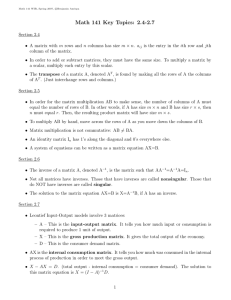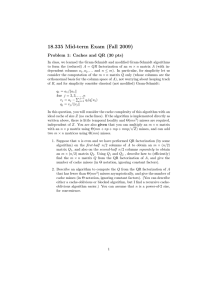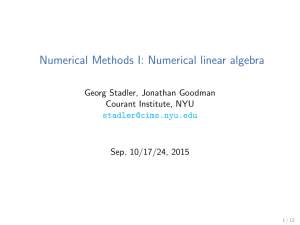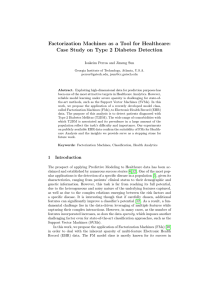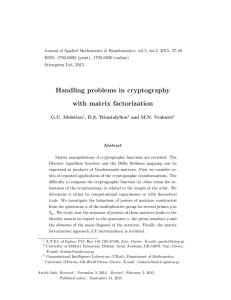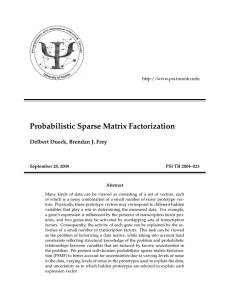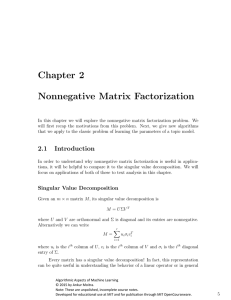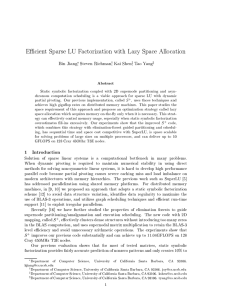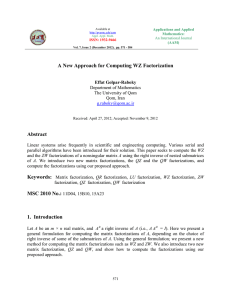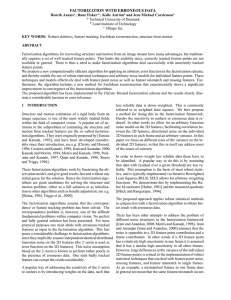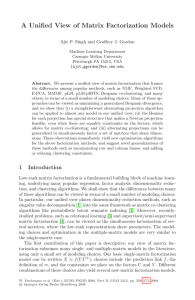Extra Practice Problems Set 1
advertisement
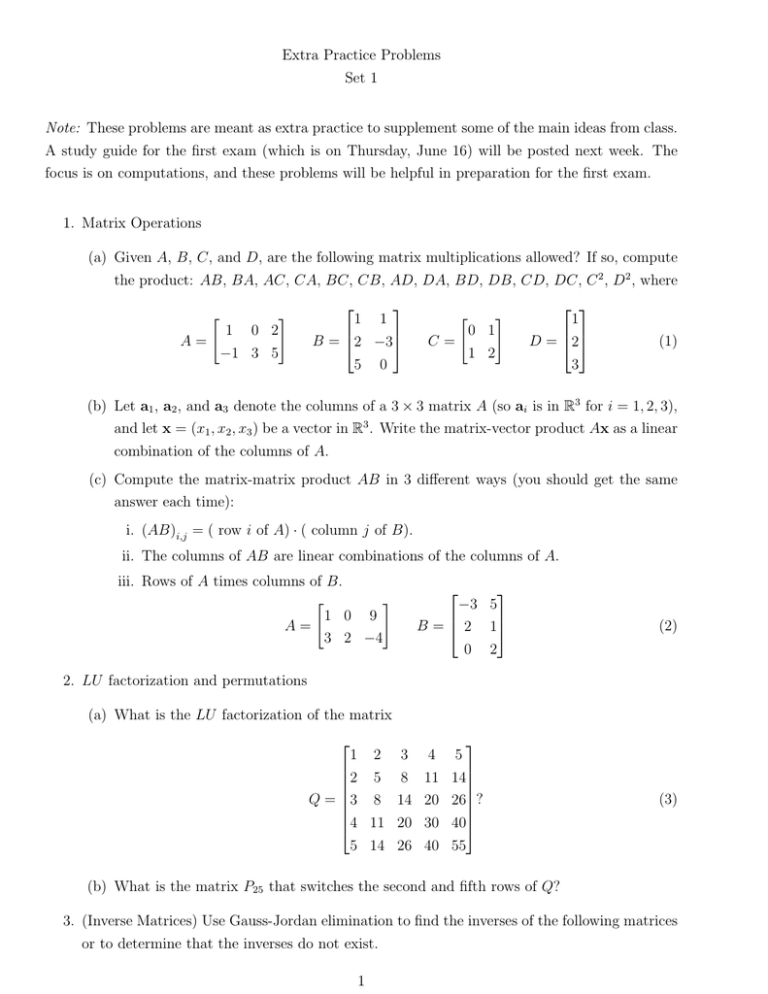
Extra Practice Problems Set 1 Note: These problems are meant as extra practice to supplement some of the main ideas from class. A study guide for the first exam (which is on Thursday, June 16) will be posted next week. The focus is on computations, and these problems will be helpful in preparation for the first exam. 1. Matrix Operations (a) Given A, B, C, and D, are the following matrix multiplications allowed? If so, compute the product: AB, BA, AC, CA, BC, CB, AD, DA, BD, DB, CD, DC, C 2 , D2 , where " A= 1 # 0 2 −1 3 5 1 1 B = 2 −3 5 0 " C= # 0 1 1 2 1 D = 2 3 (1) (b) Let a1 , a2 , and a3 denote the columns of a 3 × 3 matrix A (so ai is in R3 for i = 1, 2, 3), and let x = (x1 , x2 , x3 ) be a vector in R3 . Write the matrix-vector product Ax as a linear combination of the columns of A. (c) Compute the matrix-matrix product AB in 3 different ways (you should get the same answer each time): i. (AB)i,j = ( row i of A) · ( column j of B). ii. The columns of AB are linear combinations of the columns of A. iii. Rows of A times columns of B. " # 1 0 9 A= 3 2 −4 −3 5 B = 2 1 0 2 (2) 2. LU factorization and permutations (a) What is the LU factorization of the matrix 1 2 3 2 5 8 Q= 3 8 14 4 11 20 5 14 26 4 5 11 14 20 26 ? 30 40 40 55 (3) (b) What is the matrix P25 that switches the second and fifth rows of Q? 3. (Inverse Matrices) Use Gauss-Jordan elimination to find the inverses of the following matrices or to determine that the inverses do not exist. 1 (a) 0 2 3 A = −1 −2 1 0 0 1 (4) (b) 1 2 B= 3 0 1 2 −1 3 2 0 4 0 1 0 0 1 (5) 4. LU factorization again (a) What is the LU factorization of the matrix 1 2 3 A = −1 −1 −1? −2 −1 1 (6) (b) We can use the following idea to solve the system Ax = b. i. Rewrite the system as LU x = b. ii. Define y = U x, so then L(U x) = b becomes Ly = b. iii. Use forward substitution to solve Ly = b for y. iv. Use back substitution to solve U x = y. v. The advantage of this method is that once we have the LU factorization of A, we can solve the system Ax = b using the above idea for multiple vectors b without going through the entire elimination process again. vi. Use the above algorithm to solve Ax = b for the vectors 1 e1 = 0 0 0 e2 = 1 0 0 e3 = 0 1 (7) vii. If you insert the 3 solutions above into the columns of a matrix, how is that matrix related to A? 2
